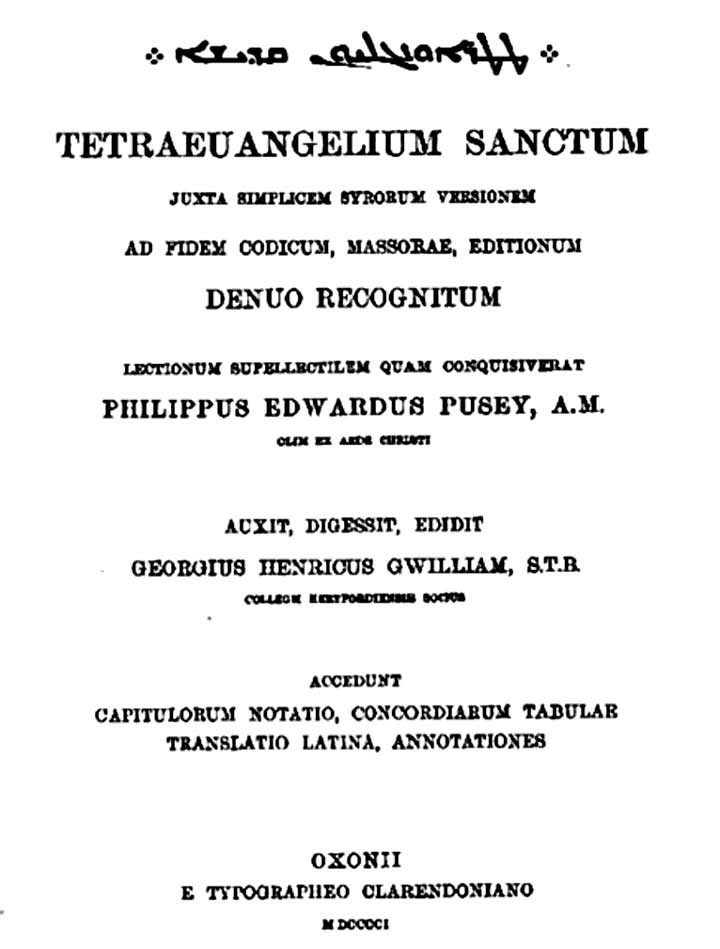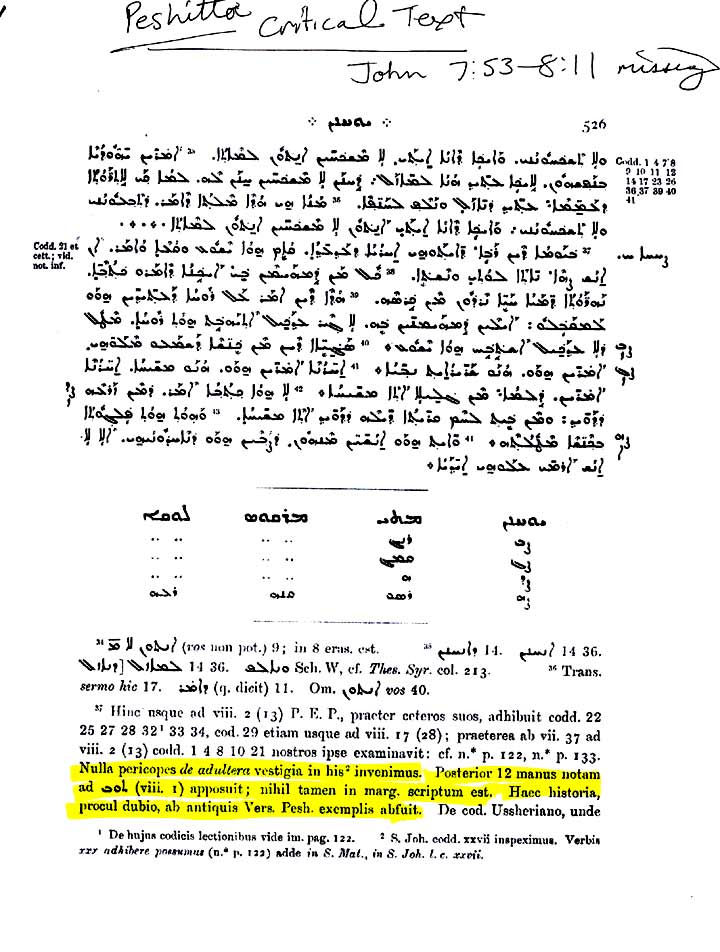INTRODUCTION
Background
John Gwynn (1827-1917) was Regius Professor of Divinity at the University of Dublin. He investigated and published several important books and papers on the Syriac versions of the New Testament, and Syrian Patriarchs.
The Strange Case of the Ussher Manuscript
Gwynn seems to have been responsible for the discovery of the famous lost 'Ussher Manuscript', a Syriac copy of the Pericope de Adultera, which vanished sometime during the Reformation and mysteriously reappeared in the Trinity Library in Britain:
The Lost Ussher Manuscript
Until lately no trace of this MS. had appeared since it was in Louis de Dieu's hands, whose last mention of it was in 1634. The manuscript has recently been rediscovered and indentified by the very Rev. John Gwynn, D.D. It had been returned, but nobody knows when or how, and placed in the Library of Trinity College, Dublin, where it has remained for more than two centuries, and is catalogued as "B. 5. 16." The account of its discovery and identification is given by Dr. Gwynn in a paper "On a Syriac MS. Belonging to the Collection of Archbishop Ussher," in the Transactions of the Royal Irish Academy, Vol. XXVII. The MS proves as Dr Hall had maintained in his articles in this Journal, to contain no more than the Pericope de Adultera, the 2nd Epistle of Peter, the 2nd and 3rd Epistles of John, the Epistle of Jude, the Apocalypse, and a small tractate of Ephrem Syrus; and not the whole NT, as maintained by Tregelles, Scrivener and others, who followed the lead of Bishop Marsh in the erroneous supposition.
The Pericope de Adultera is deomonstrated beyond all doubt to be Not only (as we knew before) to be the original which De Dieu printed in his Commentarius in Johannem, but also that followed in Walton's Polyglott; while Dr. Gwynn shows that the MS. could never have been in Walton's hands [ancd consequently the passage was taken from De Dieu's work just referred to, or else from private communications]. A striking bit of the proof that this is the missing MS., is that all the points and abbreviations of the Pericope are exactly copied by De Dieu, and the word for "not" is wanting in the last verse of the Pericope, as De Dieu stated, and therefore bracketed by him and Walton in the printed texts.
Much labor is expended by Dr. Gwynn in proving this Trinity College MS. to be the lost Ussher MS., with the result not only of the absolute demonstration (far more than one needs who is familiar with the facts at hand before), but of giving a pretty complete history of the MS. It was obtained by Ussher through Thomas Davies, a British merchant of Aleppo (who obtained sundry other MSS. for Ussher), and sent by the ship Patience of London, in January 1625/6; the scriptural portions having been written in Nov. 1625, and the tractate of Ephrem in Jan. 1625/6, doubtless just in time to be sent as stated.
- Isaac H. Hall,
Journal of the Society of Biblical Literature and Exegesis,
Vol. 6, No. 2 (Dec., 1886), pp. 103-105
Gwynn on John 8:1-11
REMNANTS
OF THE
LATER SYRIAC VERSIONS OF THE BIBLE
IN TWO PARTS
PART I: NEW TESTAMENT
THE FOUR MINOR CATHOLIC EPISTLES
IIN THE ORIGINAL PHILOXENIAN VERSION OF THE SIXTH CENTURY
AND
THE HISTORY OF THE WOMAN TAKEN IN ADULTERY
(St. John VII. 53-VIII. 12)
EDITED,
WITH INTRODUCTIONS, NOTES, AND RECONSTRUCTED GREEK TEXT
BY
JOHN GWYNN, D.D. (Dubl.), Hon. D.C.L. (Oxon.) REGIUS PROFESSOR OF DIVINITY IN THE UNIVERSITY OF DUBLIN
Introduction to the Syriac Versions
of the Pericope (Jn 7:53-8:11)
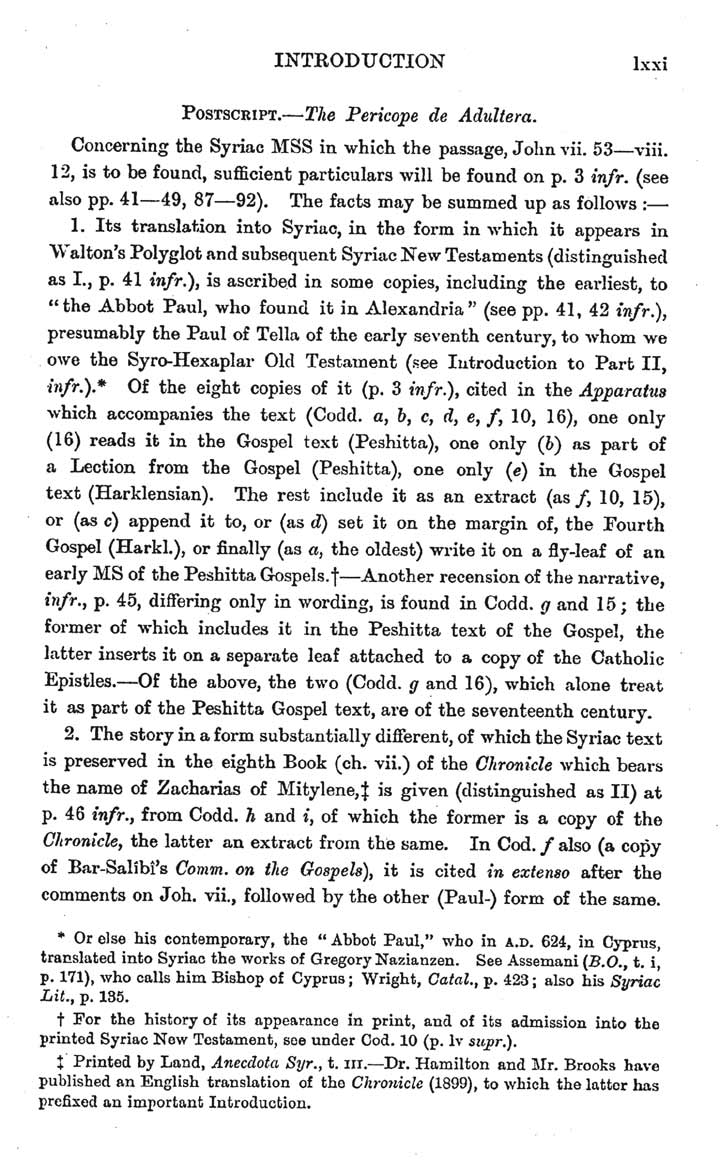

Syriac Text I
of the Pericope (Jn 7:53-8:11)
As translated by Abbat Paul:
Accompanying Marginal Notes of the MSS
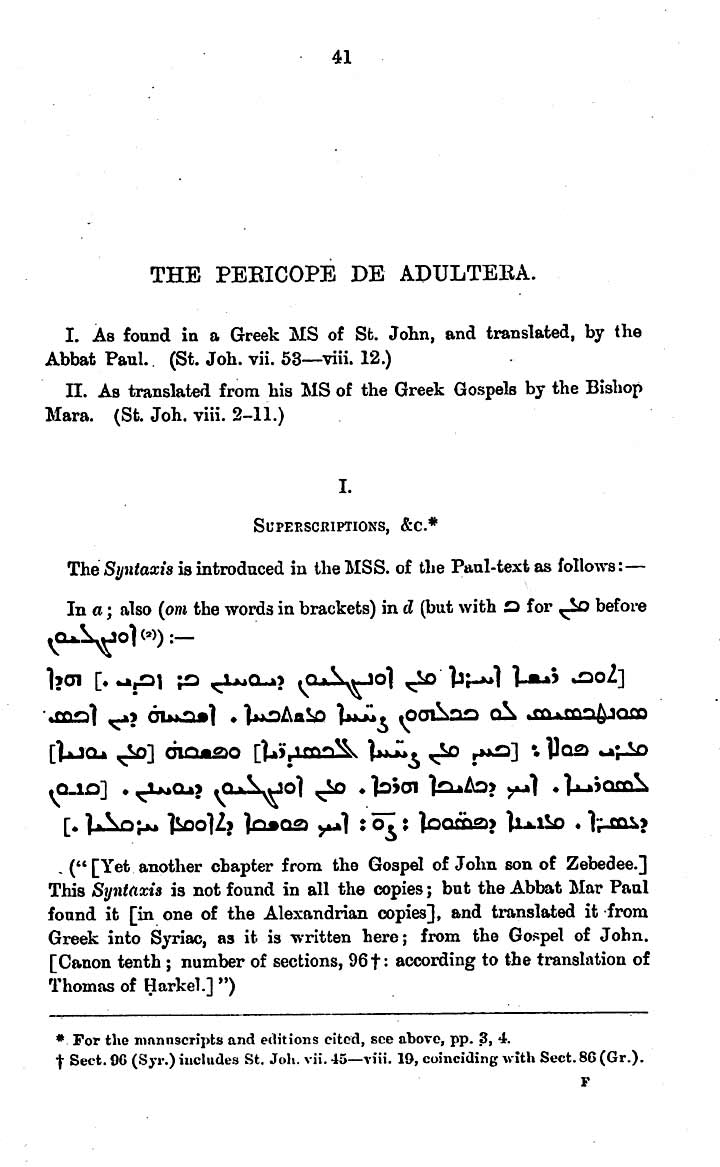
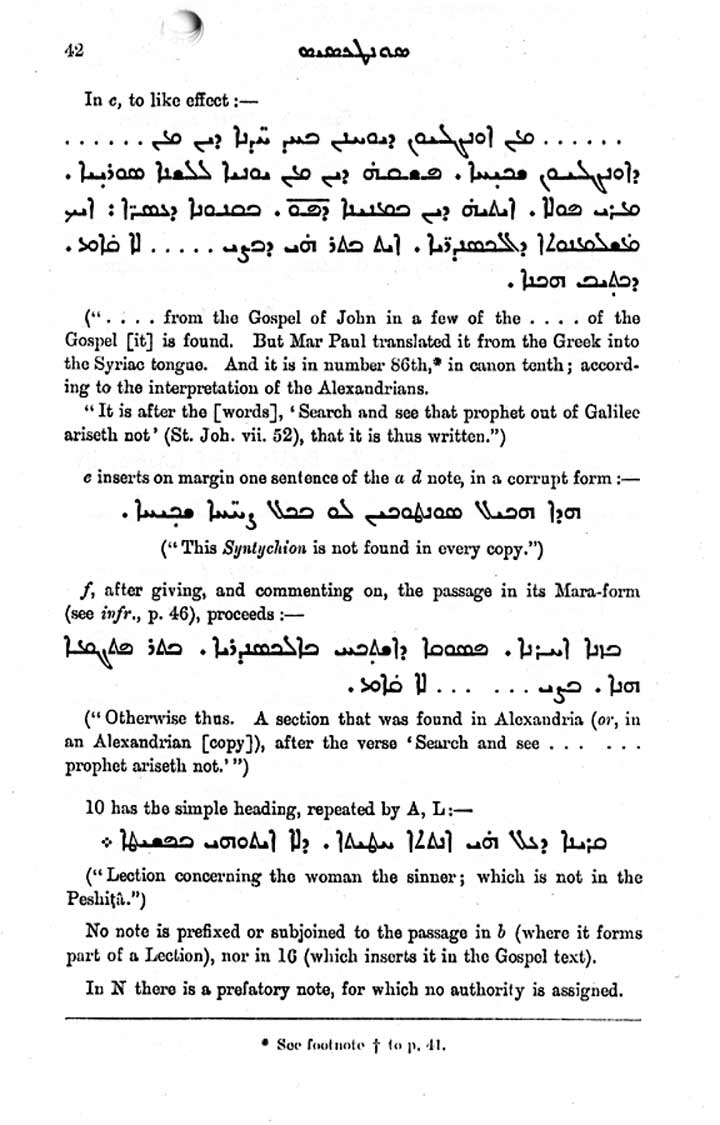
Text I
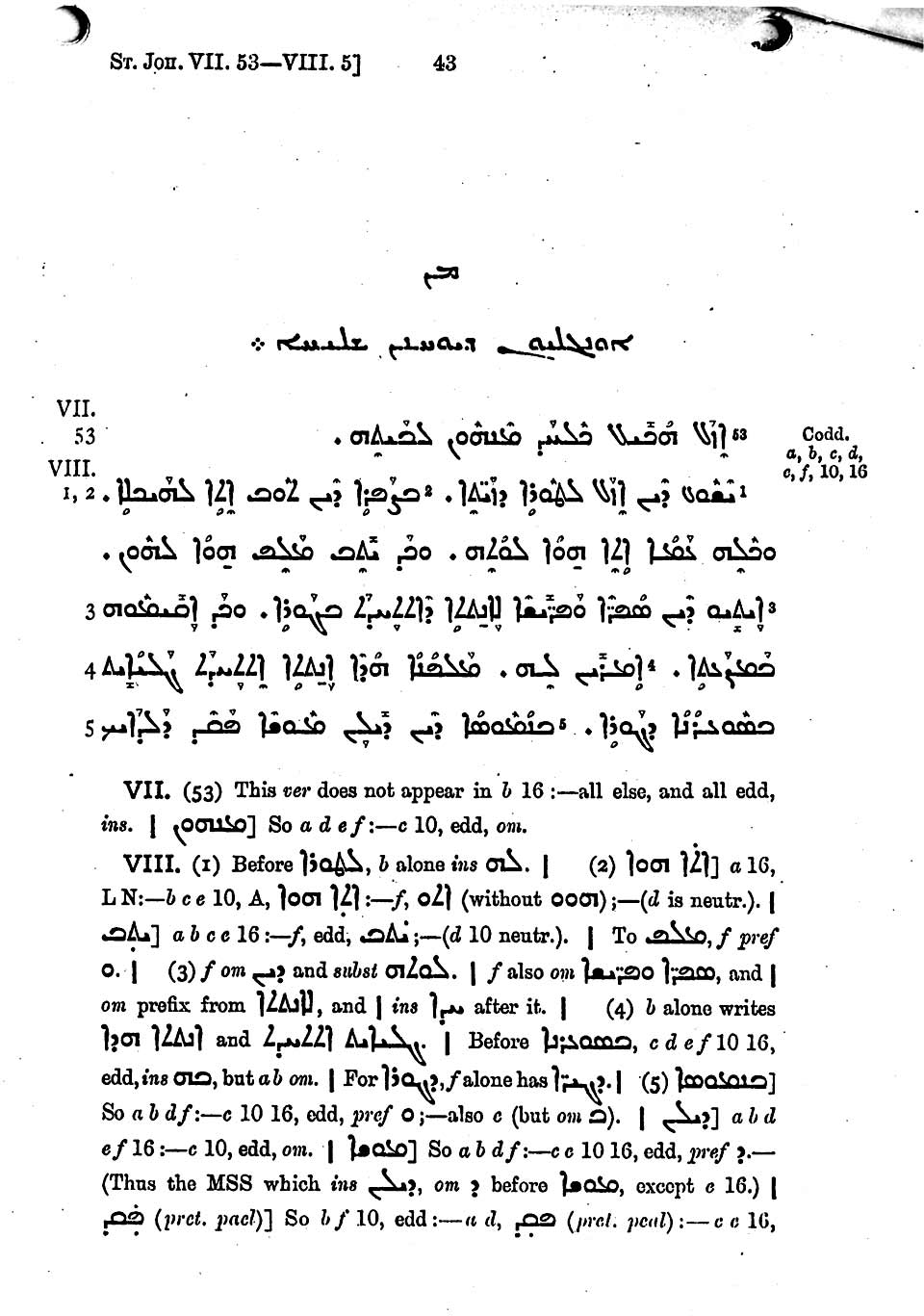
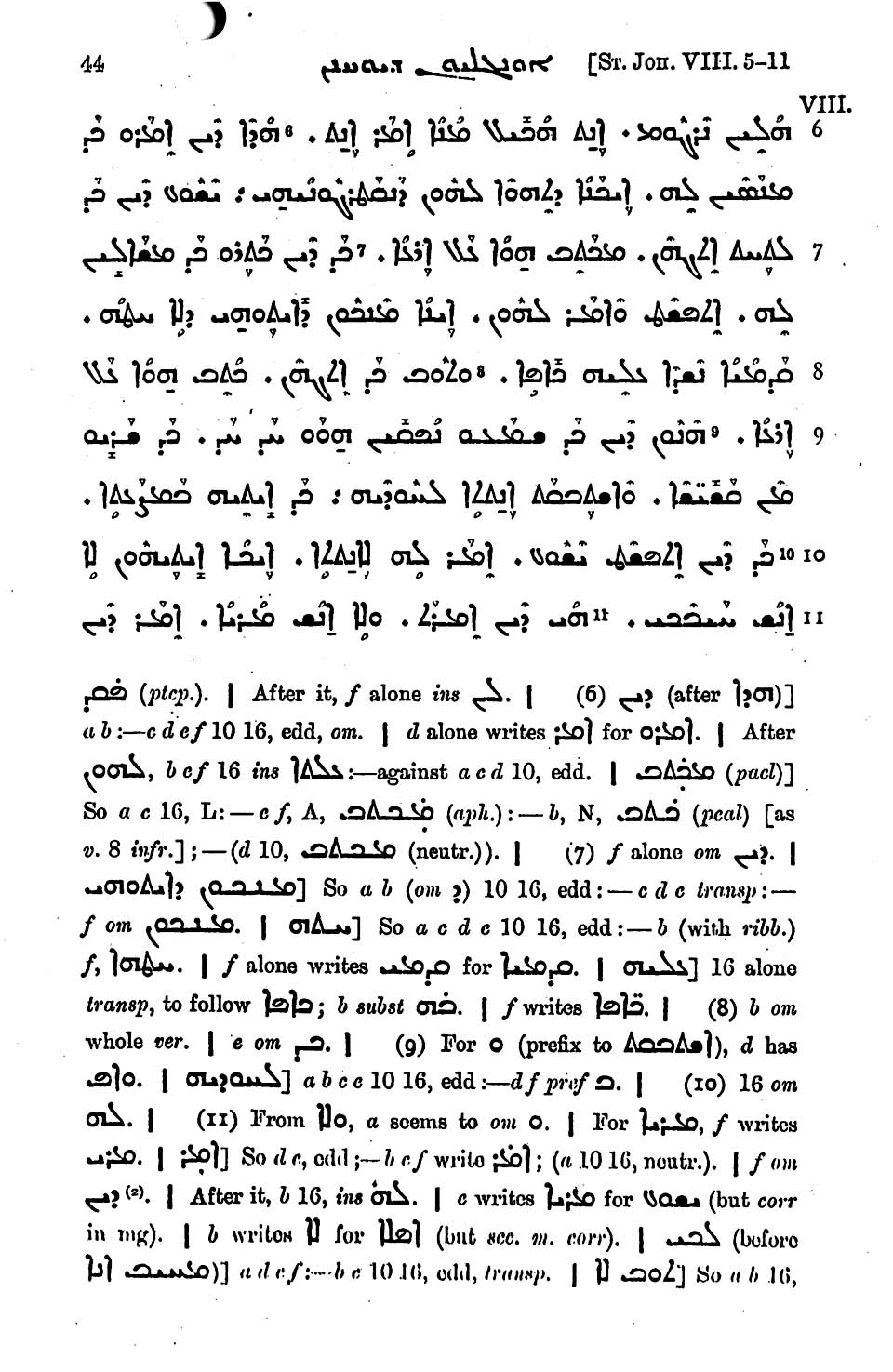

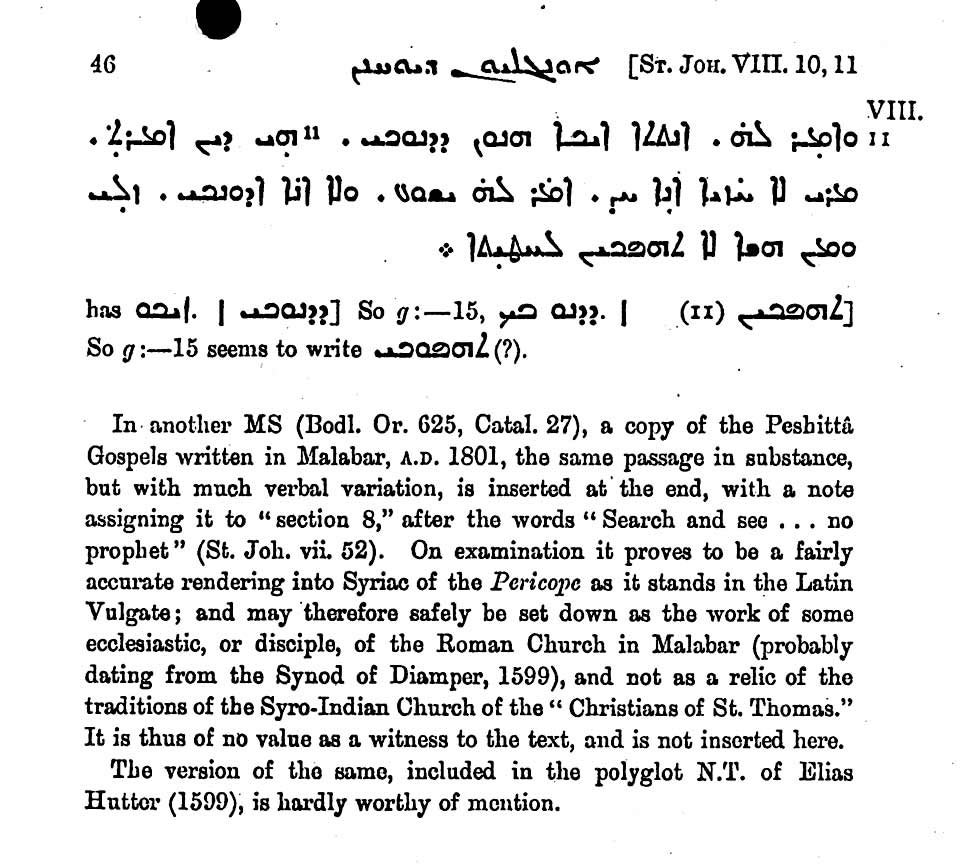
Syriac Text II
of the Pericope (Jn 8:2-11)
As translated from his MS
of the Greek Gospels by Bishop Mara
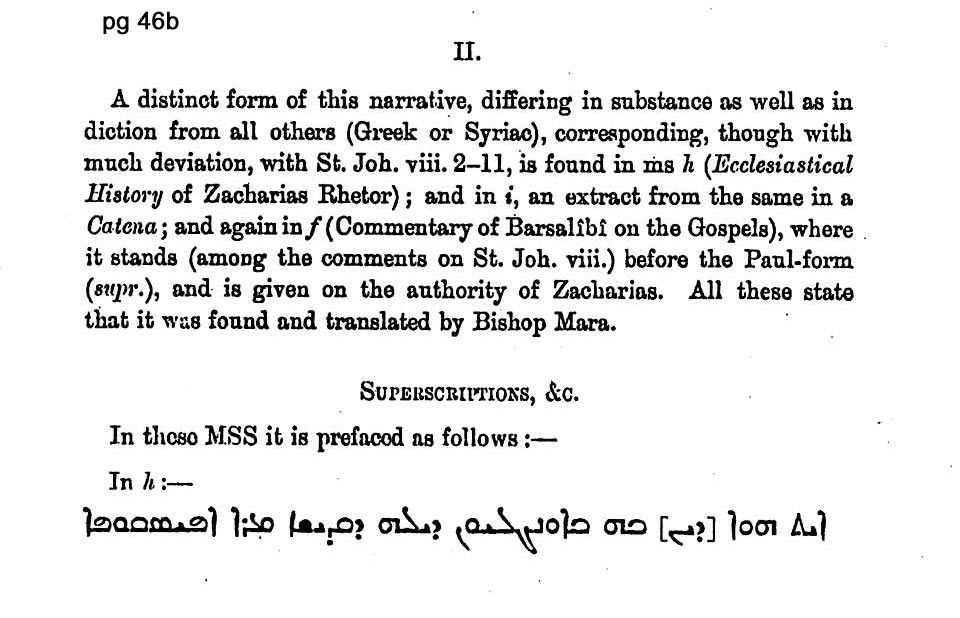
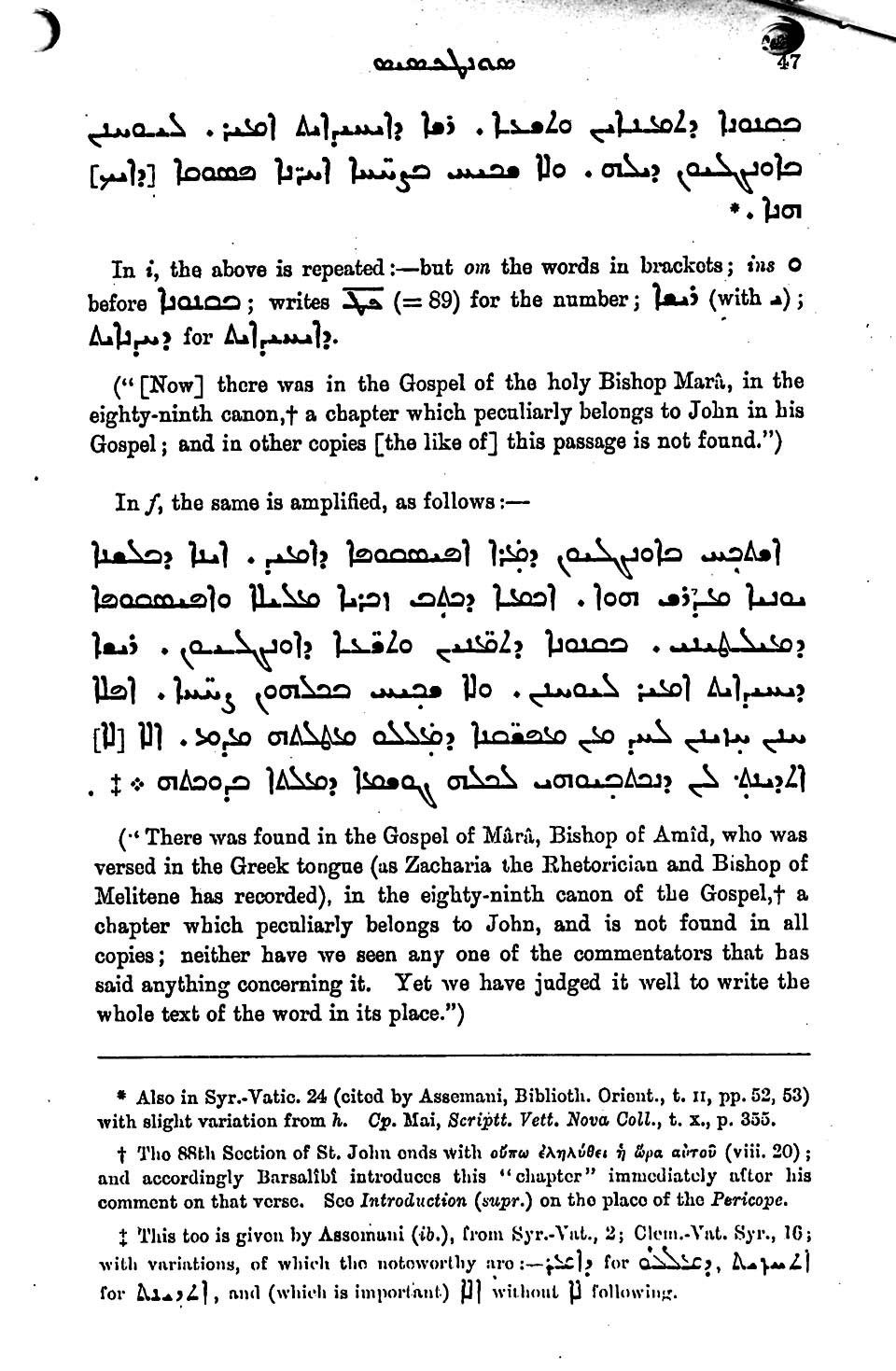
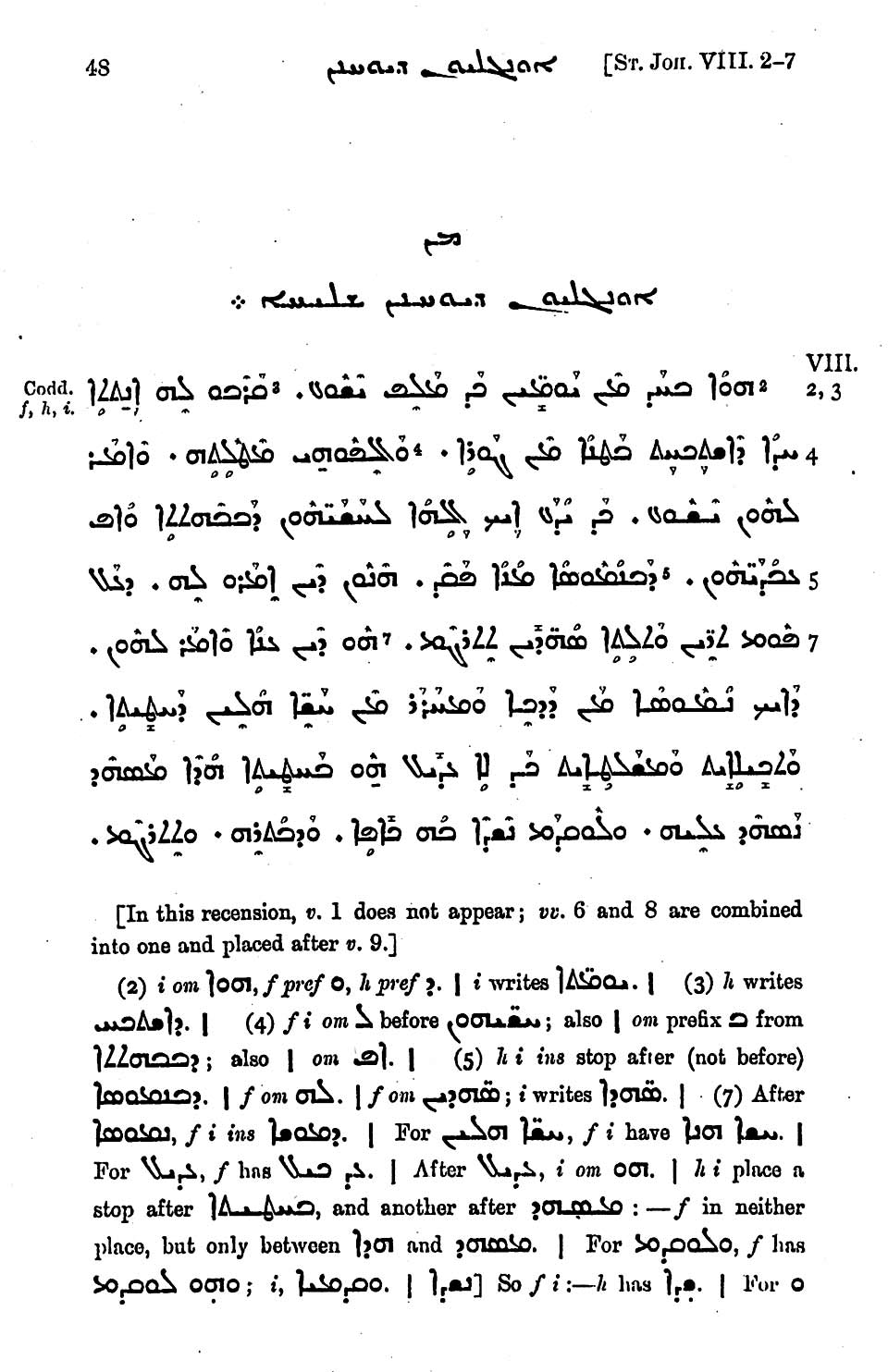

(pg 50,51 which follow are blank separators in orignal book)
Syriac Text II
English Translation
- taken from Burkitt's 1901 Lectures
We reproduce Burkitt's analysis, along with Gwynn's English translation, without comment, since we deal with Burkitt elsewhere, and he provides more historical details for us than is found in Gwynn.
The Syriac and Armenian Evidence
Both in Syriac and in Armenian the Pericope de Adultera has found its way into the common printed editions, but in both cases we have clearly to do with a late addition of no critical value. Nevertheless, in each language more ancient forms of the story exist. A copy of the Greek Gospels, which belonged to Mara of Amid during his exile at Alexandria (519-527 A.D.), contained the Pericope, either inserted after John 8:20, or more probably added at the end of the Gospel with a note that it belonged to Section 89 (- In error for 86. The Ammonian Section 89 begins at John 8:20; Section 86 contains John 7:26-8:18. ). From Mara’s Codex it was cited in full by the Syriac translator and continuator of the Ecclesiastical History of Zacharias Rhetor, and from this source again it is quoted in Dionysius Barsalibi’s Gospel Commentary at John 8:20. (See Gwynn, Trans. of R. Irish Acad. XXVII, pp. 291 ff.).
The text of the Pericope as printed in Armenian is an interpolation not much earlier than the ninth century, and most of the older MSS. omit it altogether. But in the Expositor for December 1895 Mr. F. C. Conybeare gives the translation of a very remarkable shorter recension of the story which he discovered in the same Edschmiadzin Codex of the Gospels that contains the note ascribing the longer conclusion of St. Mark to Ariston. This MS. is dated 989 A.D. Mr. Conybeare considers his shorter recension as the original form known to us. In his own words (p. 408):
“The shorter text of the Edschmiadzin Codex represents the form in which Papias and the Hebrew Gospel gave the episode. The longer form current is the same story edited, so to speak, for inclusion in the Greek Gospels at some very remote epoch.”
Mara’s Codex (as translated in the Syriac “Zacharias”)
[Gwynn, Tr. R. I. Acad. XXVII, p. 292, note]
'And it came to pass on a certain
day, as Jesus was teaching, they
brought unto him a certain woman
which was found with child of
adultery, and informed him con-
cerning her. And Jesus said unto
them (for he knew, as God, their
lusts of uncleanness and their do-
ings), “In the law what does it
command?” Then said they unto
him, “In the mouth of two or three
witnesses she shall be stoned.” But
he answered and said unto them,
“According to the law indeed one
pure and free from these lusts of
sin, and confidently and with author-
ity (as being himself not guilty in
this sin) bearing witness, let him
bear witness against her and first
cast a stone at her, and the next
likewise, and let her be stoned.”
They then, because they were vile
and guilty in this lust of transgres-
sion, went out one by one from be
fore him and left the woman. And
when they had gone forth, Jesus
was gazing on the ground. And as
he wrote in the dust thereof, he
said unto her, “Woman, these
which brought thee hither, and
were desirous to bear witness against
thee, when they gave heed unto the
things which I said unto them,
which thou hast heard, have left
thee and departed: go thou also
now, and do not this sin any more.”
Edschmiadzin Codex of 989 A.D.
[Conybeare, Expositor for Dec. 1895, p. 406]
A certain woman was
taken in sins, against
whom all bore witness
that she was deserving
of death.
They brought
her to Jesus (to see)
what he would com-
mand, in order that
they might malign him.
Jesus made answer and
said, “Come ye, who
are without sin, cast
stones and stone her to
death.”
But he him
self, bowing his head
was writing with his
finger on the earth, to
declare their sins; and
they were seeing their
several sins on the stones.
And filled with shame
they departed, and no
one remained, but only
the woman.
Saith Jesus,
“Go in peace, and
present the offering for
sins, as in their law is
written.”
Without necessarily endorsing Mr. Conybeare’s view of the Edschmiadzin text, we may acknowledge that it has a decidedly ancient air, much more so than the verbose paraphrase in the Syriac Zacharias. At the same time it shares with it the omission of “Neither do I condemn thee” in our Lord’s speech to the woman, a sentence which might seem too lenient for one who is not stated to be even penitent.
It is also somewhat difficult to see why the Edschmiadzin Codex should place the section after John 7:52, if it be a mere quotation direct from Papias. The insertion of the narrative at the same point that it is inserted in the Western texts argues some community of origin, and the absence of the Pericope, both from the Diatessaron and all early forms of the Four Gospels in Syriac, makes it improbable that it should have had a place in the earliest form of the Armenian New Testament.'
- F.C. Burkitt, TWO LECTURES ON THE GOSPELS (1901, MacMillan & co)
Greek
Back-Translations
of the Syriac Versions
of the Pericope de Adultera
With Critical Footnotes based on
Tischendorf's 8th Edition
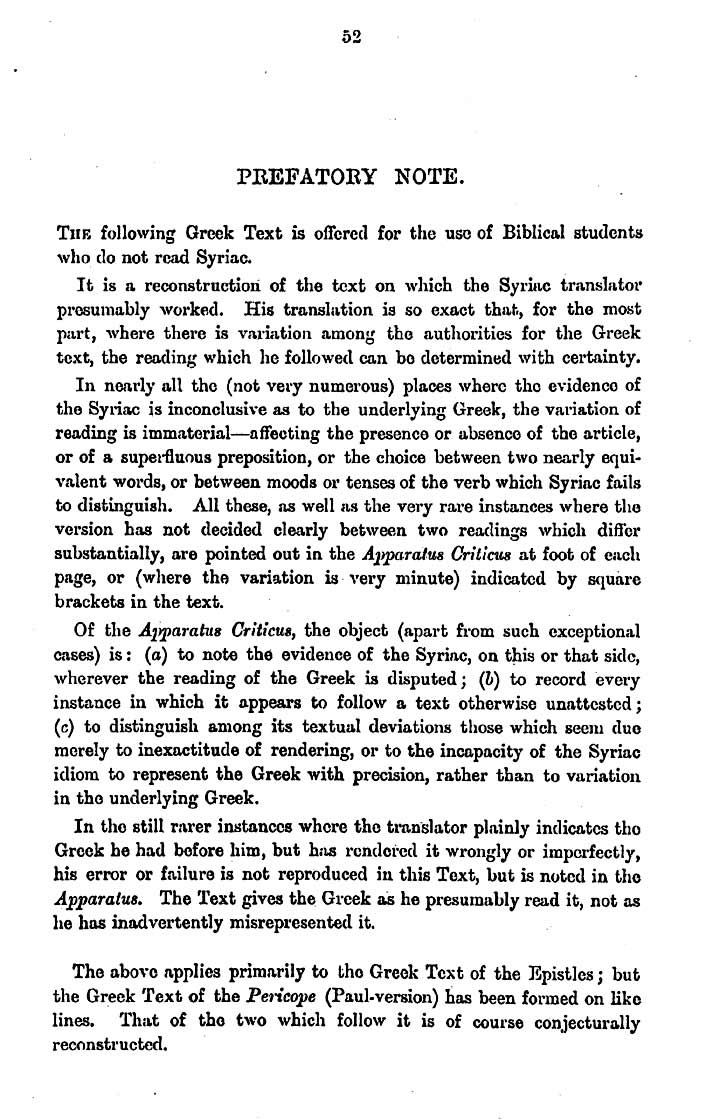
( The Greek text of the Epistles has been omitted, jumping to pg 85)

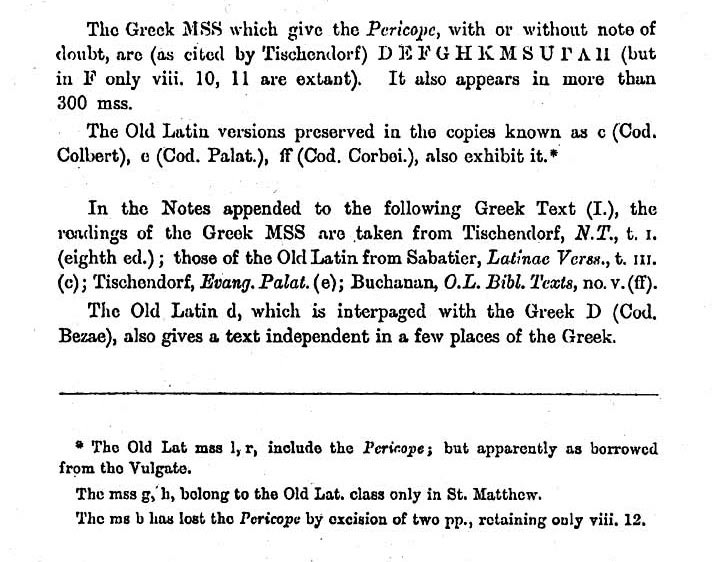
Text I
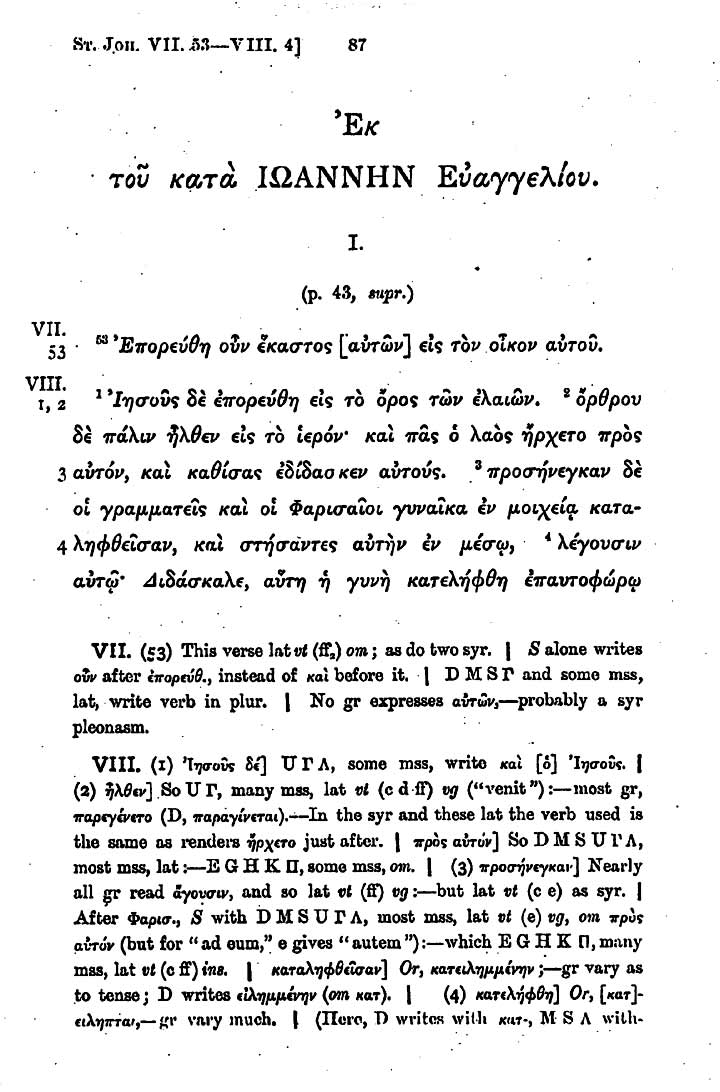
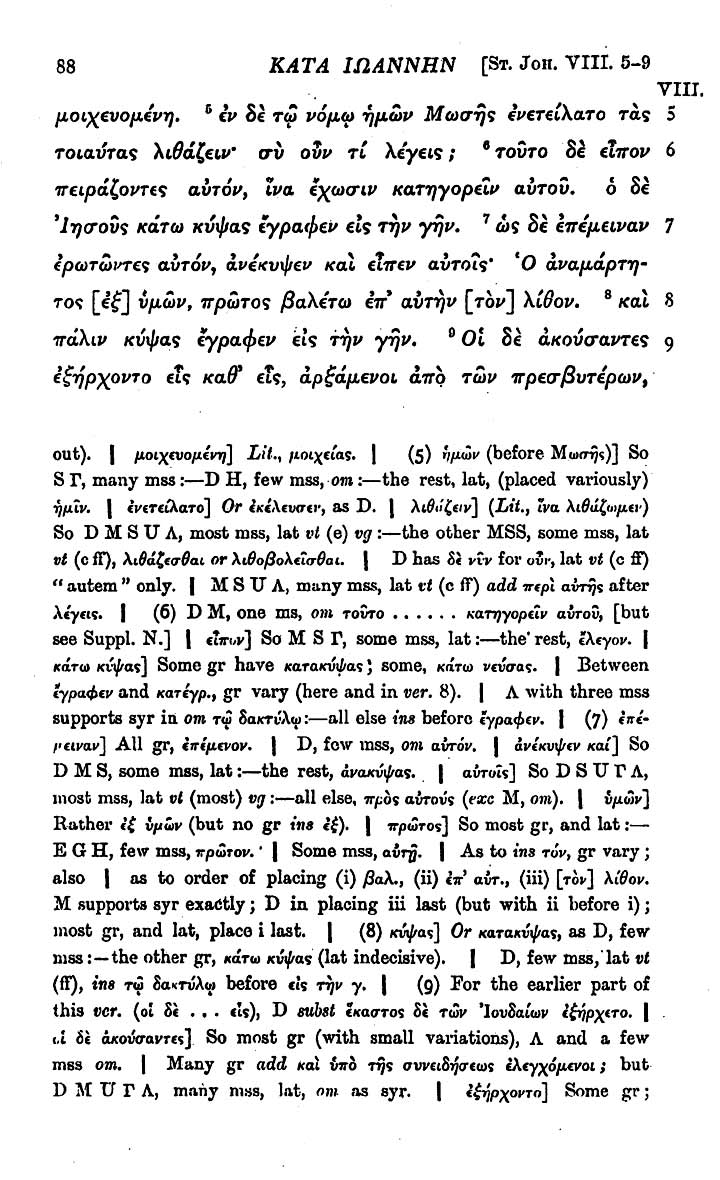
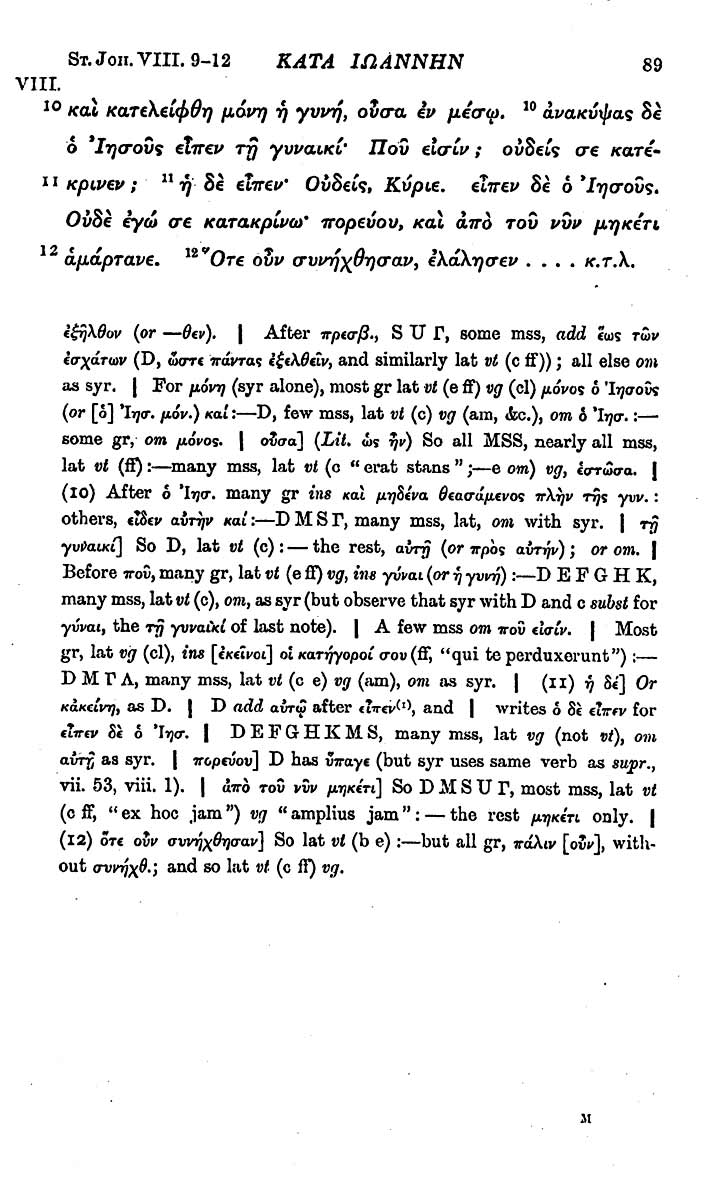
Text I' (variant of I)

Text II
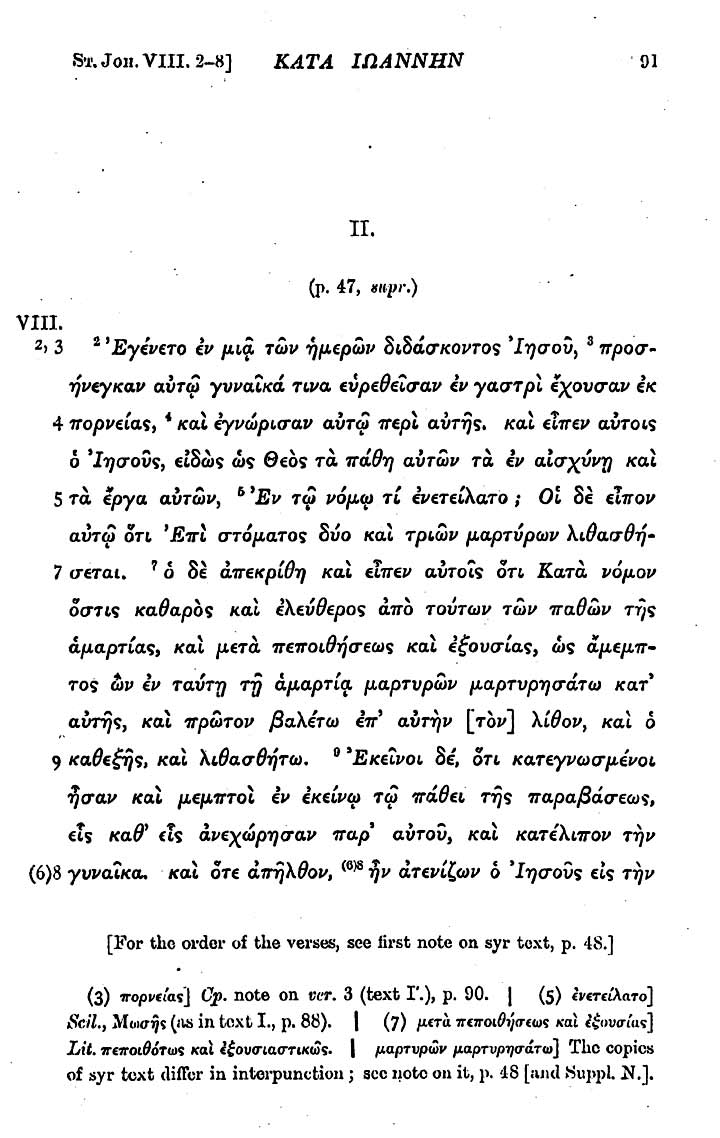
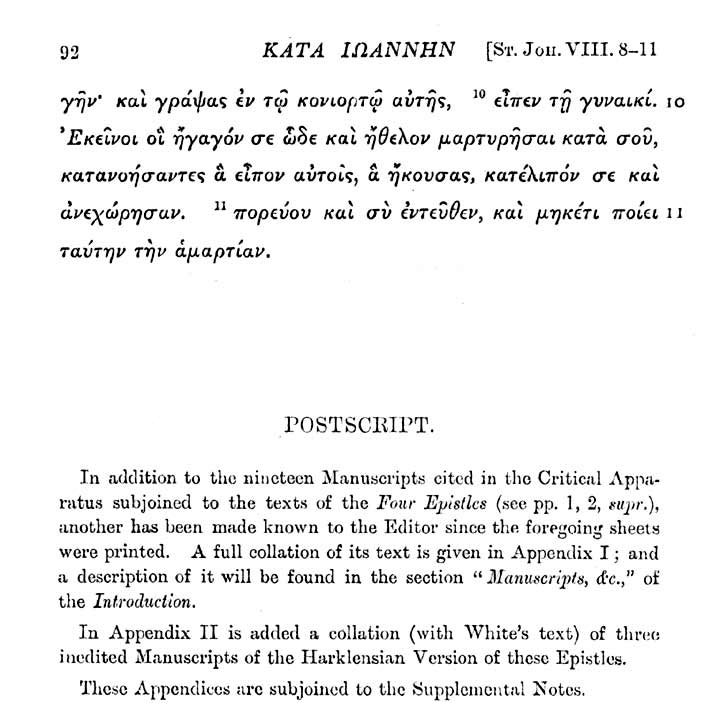
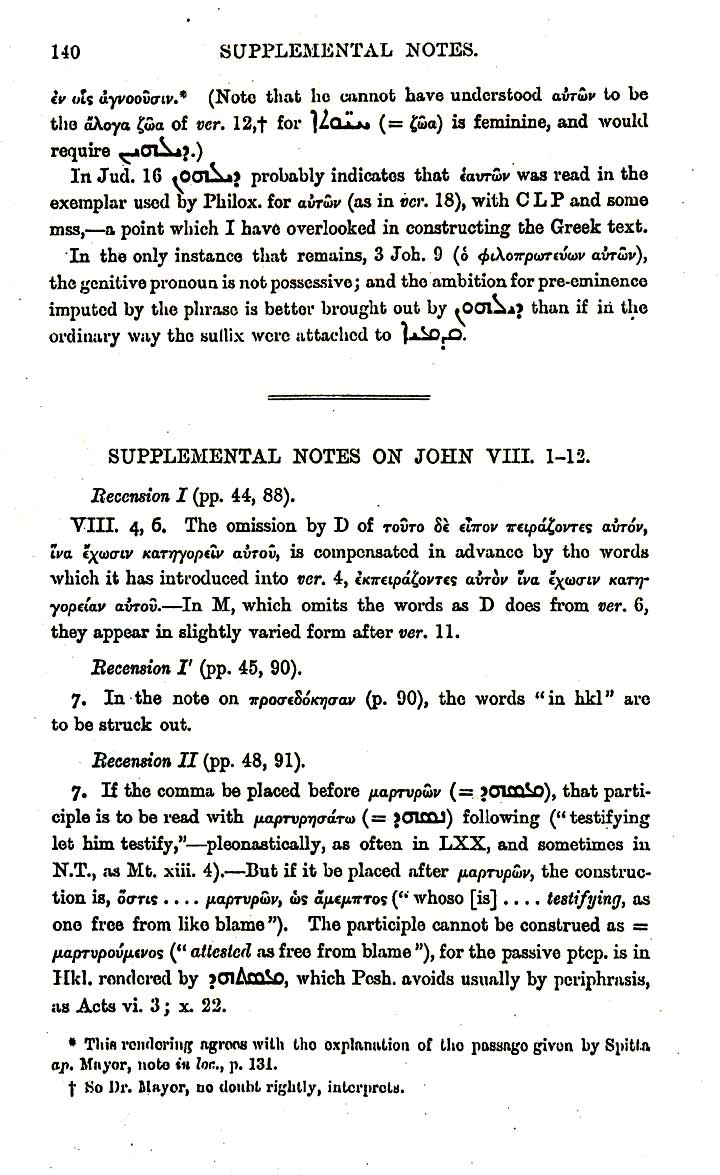
Peshitta Version
omitting the Pericope de Adultera
(Pusey's Critical Text)
